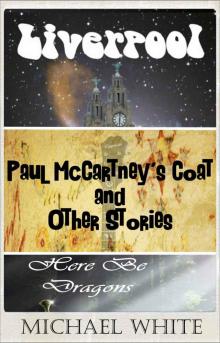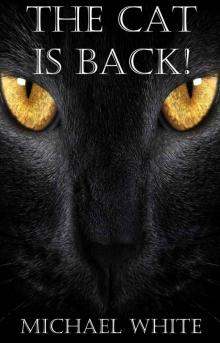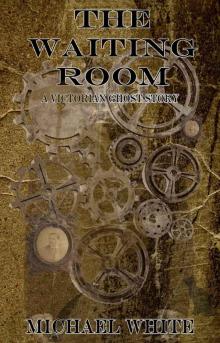- Home
- Michael White
Jack Pendragon - 02 - Borgia Ring Page 29
Jack Pendragon - 02 - Borgia Ring Read online
Page 29
Agrippa wrote many books and lectured widely. His masterpiece is Libri tres de occulta philosophia, a perfect example of Renaissance occult thinking.
Cornelius Agrippa has been mentioned in several other works of fiction, most notably in Mary Shelley’s Frankenstein (1818) and James Joyce’s A Portrait of the Artist as a Young Man (1916).
ASSASSINATION ATTEMPTS ON ELIZABETH I
There were several attempts on the life of Queen Elizabeth I. Although she was generally very popular with her subjects, Elizabeth had many enemies. Indeed, when she came to the throne in 1558, she was crowned by the Bishop of Carlisle, an unimportant cleric, because none of the important churchmen in the realm would conduct the ceremony for ‘a heretic’ who was an illegitimate successor (Elizabeth was the bastard daughter of the hated Ann Boleyn).
Elizabeth was dedicated to the reforms her father, Henry VIII, had initiated, and her servants hunted down and executed Catholic activists. In consequence she was hated by Rome, excommunicated by the Pope in 1570, and denounced as a heretic. At the same time, Elizabeth was opposed to extreme Protestant sects who were threatening to destabilise England.
The most famous plot against her was concocted by a Catholic zealot named Anthony Babington and his cohorts, who planned to kill the Queen and replace her with the Catholic Mary Queen of Scots. This plot was exposed in 1586 by Elizabeth’s dedicated and extremely effective spymaster, Francis Walsingham.
THE BEAR GARDEN
During the reign of Henry VIII (1509–47) commoners were banned from playing or watching most sports. It was believed by the ruling classes that their inferiors should work and that sports distracted them from their labours. However, wealthy people were not subject to such draconian rules and they became keen followers of football and tennis as well as such cruel pastimes as cockfighting and animal baiting.
By Elizabeth’s time, such barbaric sports as bear-baiting and bull-baiting were popular with all classes of people. The Queen herself attended bear gardens, and arenas built especially for these spectator sports sprang up in every large town in England. The most famous was the Bear Garden in Southwark which appears in The Borgia Ring. This was built around 1540, and stood close to what is now Southwark Bridge Road. It remained open for almost a century and a half, not closing down until 1682. The sport of bear-baiting remained legal until 1835.
ROBERTO BELLARMINO
Born in 1542, Roberto Bellarmino was a cardinal, a powerful and dedicated Jesuit and a great papal adviser. In 1588, a year before this book is set, he was made Spiritual Father to the Roman College. He is seen by some Catholics as a great man who was a guide to successive Popes and an intellectual who wrote a collection of important treatises on theology. He was canonised by Pope Pius XI in 1930. However, by many, Bellarmino is seen as an obsessive who prized the power of the Church above all else, including innocent human lives. He was known as ‘Hammer of Heretics’ and did his utmost to eradicate those who opposed the Church. He was instrumental in the early stages of Galileo’s persecution by Rome, and masterminded the torture and execution of the philosopher Giordano Bruno who was burned at the stake in 1600.
LUCREZIA BORGIA AND THE BORGIA FAMILY
The Borgias may be thought of as Renaissance Mafiosi. Their time at the pinnacle of power was short, but they ruled over extensive papal lands across Europe. The head of the family, Rodrigo Borgia, was born in Spain and ascended to the papacy in 1492. He was a vile man who committed sodomy, bestiality and incest. He threw extravagant orgies using papal funds and meddled in the political scene of Europe without understanding anything about it. He was a murderer who stopped at nothing in his pursuit of wealth and power.
Pope Alexander’s son, Cesare Borgia, was, if anything, even more corrupt and evil than his father. He played at being a warlord, but preferred to kill his enemies via deceit and deception rather than fighting on the battlefield. He is strongly suspected of killing his own brother, Giovanni, as well as many of his sister Lucrezia’s suitors. His favourite pastime was travelling into Rome in disguise with an entourage of thuggish minders. There, he would befriend some unfortunate at a bar and coerce them into insulting the Borgia family. He would then drag them into the street and chop off their hands. If the victim was lucky, Cesare or one of his henchmen would finish them off. If, however, Cesare felt particularly annoyed, he would leave his victim to wander the streets, bleeding to death.
Growing up in such a family, it is hardly surprising that Lucrezia Borgia, five years Cesare’s junior, ended up as corrupt as her relatives. She was a nymphomaniac who was known to have indulged (or been forced to indulge) in incestuous relationships with her father and her brother, often at the same time.
However, Lucrezia is most famous as a murderess. She really did produce a poison called Cantarella and she did have a ring with a top that opened. I have, however, adapted this to a ring containing a spike. In reality, the ring simply contained the poison which she surreptitiously added to the food or drink of a prospective victim.
It is also true that she knew Leonardo da Vinci, who worked as a military adviser to the Borgia family for a year (1502–3). Leonardo did indeed theorise about the idea of fortifying poison by passing it through the body of an animal. However, he absolutely refused to conduct experiments to prove his ideas. It is believed that Lucrezia had no such scruples.
WILLIAM BYRD
Byrd’s exact date of birth is not known, but he was aged between forty and fifty at the time in which the story of The Borgia Ring is set. He was greatly favoured by Queen Elizabeth and appointed her Court Composer. His works are still popular today, some four centuries after his death. William Byrd was a devout Catholic who is known to have attended many clandestine Masses, so it is perfectly possible that he would have turned up at a religious gathering in Southwark in February 1589, as described in the novel.
CANTARELLA
This is a real poison. Its formula has been lost, but its key ingredient was arsenic. The poison was indeed created by Lucrezia Borgia (almost certainly with the help of an alchemist). She is also thought to have used bears and dogs to create the fortified version of the poison.
JESUIT MISSIONARIES
Jesuit missionaries were trained in Rome with the specific task of indoctrinating non-Catholics and giving spiritual support to their brethren in England. Between 1570 and 1600 there were many Jesuit missionaries who went further than this remit and deliberately tried to subvert English society and damage the standing of the Queen. Many of them were executed as traitors. Of course, the parallel with modern-day terrorist cells in England is striking.
PURSUIVANTS
This was the name given to those employed by Francis Walsingham, the Queen’s spymaster, whose job it was to hunt down and flush out Catholic activists. Supporters of the Roman Church lived in constant fear of these men, a force that might be likened to a Tudor-era Gestapo. They responded to intelligence gathered from Walsingham’s spy network and raided Catholic gatherings and secret Masses, dragging off unfortunates to be tried for high treason, and, in many cases, cruelly executed.
SKELETONS UNDER LONDON
There are many of these. As London is redeveloped, more and more skeletons are being unearthed. A recent report (Tales From Beyond the Grave, BBC Online, 19 July 2008) described how some 17,000 skeletons have been discovered during the past thirty years in London. Many of these were victims of plague found in communal pits. However, it is relatively common for single skeletons to be unearthed by builders, as described in The Borgia Ring.
SOUTHWARK
This district on the south bank of the Thames is today a rather desirable and quite expensive area in which to live. However, until at least the middle of the twentieth century, it was regarded as one of the worst areas of London. In Tudor times it was home to bear gardens and theatres, brothels and gambling dens.
THE LONDON THEATRE
The theatre flourished in London during Tudor times. The Queen herself was a big fan, and the Londo
n stage was a fertile proving ground for the development of such immortal talents as William Shakespeare, Ben Jonson, John Fletcher and Christopher Marlowe.
Shakespeare’s Globe Theatre was not built until 1599, a decade after the setting of this book. However, it is believed that William Shakespeare started acting in London around the time in which I have set this novel, and of course he has a brief cameo appearance in it. The theatre described in the novel, the Eagle, is fictitious, but I based it upon old descriptions of real theatres in Southwark and elsewhere.
Flags were used to tell the public what sort of play would be performed each night. A different colour was used to signify comedy, tragedy or history.
TUDOR EXECUTIONS
These were conducted pretty much as described in the book. The difference between execution for treason and high treason was immense. Those convicted of treason were either beheaded or hanged, a relatively swift end. Those unfortunate enough to be condemned for high treason were hung, drawn and quartered. The execution described towards the start of The Borgia Ring is closely based upon the execution of the Catholic missionary Henry Wittingham who was hung, drawn and quartered at Tyburn, by decree of Queen Elizabeth I.
FRANCIS WALSINGHAM
Sir Francis Walsingham was born into the aristocracy around 1532 (though the exact date is unknown). He was a great administrator and Queen Elizabeth’s right-hand man for almost thirty years. He served as ambassador, military adviser and Principal Secretary, and was knighted in 1577. Walsingham is best remembered as the Queen’s spymaster. He created the first properly organised ‘secret service’ and employed many innovations to further his work, including the use of ingenious codes and intelligence-gathering methods. He employed a network of thousands of spies throughout England, Scotland, Wales and Ireland, as well as on the continent of Europe. Walsingham was almost single-handedly responsible for the thwarting of at least half a dozen plots against the person of the Queen, and his spy network was invaluable in the ongoing conflicts with Spain during Elizabeth’s long reign. He died a little over a year after the setting of this book, in April 1590.

 Paul McCartney's Coat
Paul McCartney's Coat The Cat Is Back!
The Cat Is Back! Laughs, Corpses... and a Little Romance
Laughs, Corpses... and a Little Romance The Waiting Room
The Waiting Room Into the Light- Lost in Translation
Into the Light- Lost in Translation Six of the Best
Six of the Best Scrapbook
Scrapbook Bob the Balloon, Al Capone and the Two Bob Bouncer
Bob the Balloon, Al Capone and the Two Bob Bouncer The King of the Cogs
The King of the Cogs A Bad Case of Sigbins
A Bad Case of Sigbins To the Lighthouse
To the Lighthouse Overboard!
Overboard! A Challenging Game of Crumble
A Challenging Game of Crumble Conversations With Isaac Newton
Conversations With Isaac Newton The Complete Adventures of Victoria Neaves & Romney
The Complete Adventures of Victoria Neaves & Romney Liverpool Revisited
Liverpool Revisited Dad Comes to Visit
Dad Comes to Visit Lachmi Bai, Rani of Jhansi: The Jeanne D'Arc of India
Lachmi Bai, Rani of Jhansi: The Jeanne D'Arc of India Barf the Barbarian in Red Nail (The Chronicles of Barf the Barbarian Book 2)
Barf the Barbarian in Red Nail (The Chronicles of Barf the Barbarian Book 2) Equinox
Equinox Barf the Barbarian in The Tower of the Anas Platyrhynchos (The Chronicles of Barf the Barbarian Book 1)
Barf the Barbarian in The Tower of the Anas Platyrhynchos (The Chronicles of Barf the Barbarian Book 1) The Medici secret
The Medici secret Jack Pendragon - 02 - Borgia Ring
Jack Pendragon - 02 - Borgia Ring The Art of Murder jp-3
The Art of Murder jp-3 Travels in Vermeer
Travels in Vermeer